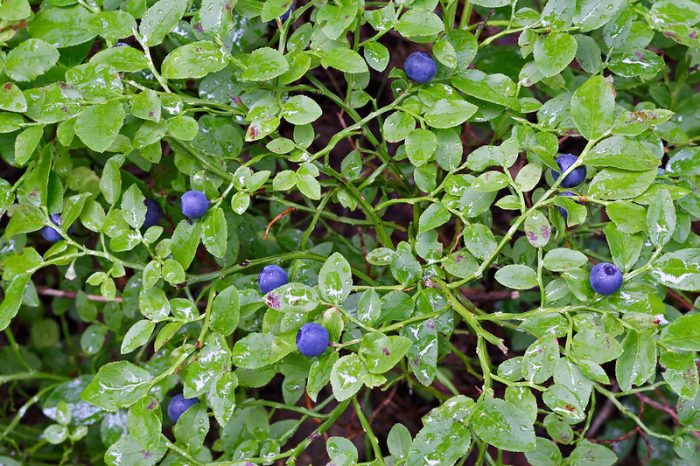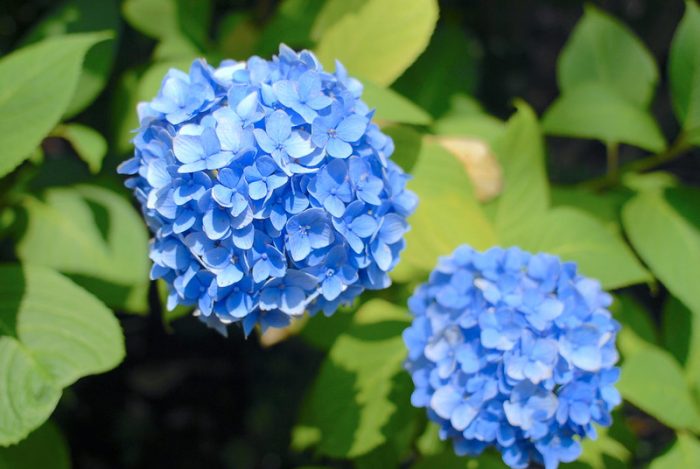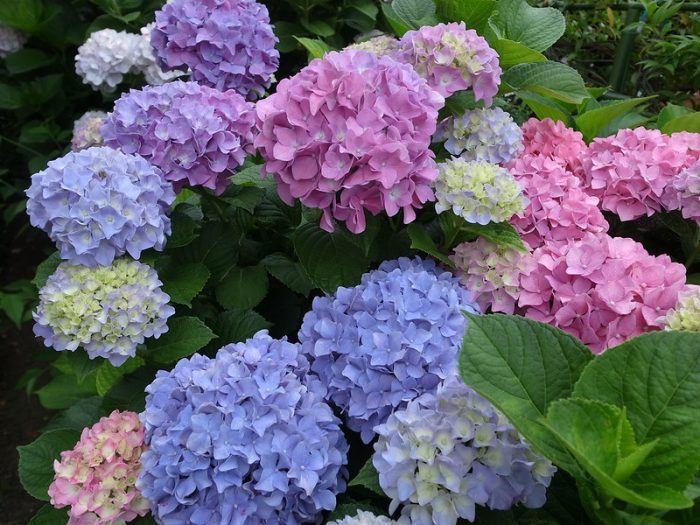Soil pH: How to Test it without a Test Kit
Soil pH influences plants’ access to nutrients and therefore affects all aspects of their development. Wrong soil pH is one of the most common reasons why new, lovingly cared for, additions to the garden fail to thrive. It is, therefore, important to know the reaction of soil in one’s garden. In this post I tell how to test it without a test kit, improve it organically, and how to choose the right plants for different types of soil.
Soil types
Soil pH is used to measure how acidic or alkaline the soil is. pH stands for Latin pondus hydrogenii, which literally means ‘the weight of hydrogen’. This is because soil acidity is determined by the amount of hydrogen ions the soil contains, and so pH is a measure of the concentration of hydrogen ions.
Soil pH is measured on the scale of 0 to 14. The lower the number, the more acidic is the soil. Depending on the value of pH the soils are described as acidic, neutral or alkaline, as follows:
pH 1-6 – acidic
pH 7 – neutral
pH 8-12 – alkaline.
The widest range of plants grow on neutral (pH 7) or mildly acidic soil (pH 5.1-6). Extremely acidic (pH below 4) or very strongly alkaline soils (pH above 9) are toxic for most plants.
Soil pH and minerals available to plants
Soil pH influences what minerals are available to plants. When the soil is neutral or alkaline, heavy metals remain largely inaccessible to plants. And on the contrary, acidic soils with low pH contain a lot of iron, aluminium and other metals in the form accessible to plants.
Soil pH, fertilisers and watering
Some agricultural and gardening techniques change soil pH. Most notoriously, intensive agriculture, when large quantities of fertilisers are applied, makes the soil much more acidic. As a result, the soil becomes inhospitable to beneficial bacteria and plants.
Watering can also affect soil pH. Thus, frequent watering with hard water makes the soil more alkaline, whereas watering with soft water makes it more acidic.
Since a large number of plants prefer neutral or slightly acidic soil, watering with rain water is a good practice, not only because it saves water, but also because it is chemically beneficial for plants.
Plants and soil acidity
Plants adapted to life in different soil types. Here are some examples of plants that prefer alkaline, neutral and acidic soils.
1. Plants that prefer neutral or moderately alkaline soils and do not tolerate acidity are: all types of cabbage, celery, parsnips, asparagus, onions, garlic, beetroot, plums, cherries, currants.
2. Plants that prefer mildly acidic soils, close to neutral, include: tomatoes, beans, cucumbers, peas, melons, spinach, courgettes, carrots, sunflowers, roses and chrysanthemums.
3. Plants that prefer moderately acidic soils (pH 5-6) include: potatoes, aubergine, sweet potatoes, rhubarb, oriental lilies and holly.
4. Plants that prefer highly acidic soils (pH 4-5) include blueberries and cranberries.
Precise recommendations for ideal pH for common garden plants are widely available. Thus according to a table published by the University of Vermont,
ideal soil pH for a hybrid tea rose is 5.5-7, for lilac – 6-7.5, for spirea 6-7, for apple – 5.5-6.5, for red raspberry – 6-7.5, for strawberry – 5.5-6.5, for asparagus – 6-8, for beans – 6-7, for broccoli – 6-7, for carrots – 5.5 -7, for tomatoes – 5.5-7.5, for potatoes – 4.8-6.5.

Hydrangea and soil pH
Hydrangea (Hydrangea macrophylla) is a very popular garden plant that can be grown in both acidic and alkaline soils. The colour of its flowers ranges from blue to pink with various shades of purple and lavender in between.
This colour is not something the plant is ‘born with’, but is due to the reaction of the soil it grows in. Hydrangea flowers, therefore, act as a natural indicator of soil pH. They are blue when it grows in acidic soil and pink when it grows in alkaline soil. Hydrangea is unique among plants in this ability to indicate soil acidity.
Because of this ability gardeners can influence the colour of hydrangea blooms. There are various ways of doing it, including watering with a solution of vinegar or lemon juice, mulching with conifer needles, lemon rind and coffee grounds, and burying metal objects next to the plant, including rusty nails and old tin cans.
All these makes the soil more acidic, and changes the colour of hydrangea flowers to blue. And on the contrary adding lime (calcium hydroxide) to soil changes the colour of the flowers to pink.
Henry Schreiber, writing for the American Scientist, points out that it is not just the soil acidity that changes the colour of hydrangea to blue, but also the presence of aluminium in the soil. He therefore recommends regular watering with commercially available aluminium sulfate.
One also needs to be patient – it takes one or even two seasons for the colour of hydrangea to turn the desired shade.

Signs that a plant is suffering from wrong soil pH
When acid loving plants are not getting enough iron, their leaves turn yellow. This can be often observed in popular decorative plants, such as skimmias, typically sold in garden centres at Christmas.
If they are planted in alkaline soil, they suffer and quickly decline. Their leaves loose their dark green colouring and develop yellow markings.
The best solution for gardener in such situation is to grow plants unsuitable for one’s soil in pots. I have been growing skimmia in a large pot already for several years. It looks good, produces an abundance signature red buds in winter, and flowers prolifically every spring. But I do have to water it with a fertiliser for acid loving plants about every two weeks in the summer. If I stop doing this, its leaves quickly turn yellow.
How to test soil pH without a test kit
Commercial test kits can measure soil pH reasonably precisely, though only a laboratory test is really reliable. It is possible, however, to get an idea of how acidic of alkaline one’s soil is without a test kit. Three methods of doing this are described below.
Observing plants that grow in your area
One way to find out the soil pH is to observe plants that naturally grow in your area. The presence of certain plants indicates the type of soil.
1. Plants that prefer neuter of moderately alkaline soils include: clovers, chicory, rye grass, oxeye daisy, dianthus, lilac, philadelphus, weigela.
2. Plants that prefer acidic soil include: azaleas, rhododendrons, skimmias, camelias, many, though not all, varieties of heather, lupins.
And of course, don’t forget to look at the colour of hydrangeas growing in your area.
Home soil pH test: vinegar
There is a simple test you could do to estimate whether your soil is acidic, neuter or alkaline. All it requires is table vinegar. Here is how to do it:
1. Collect a teaspoon of soil.
2. Put it on a piece of glass and place the glass on a dark surface.
3. Lightly moisten the soil sample with table vinegar.
4. Estimate the result:
– a large amount of foam shows that the soil is alkaline
– a medium amount of foam shows that the soil is neutral
– the absence of foam shows that the soil is acidic.
Home soil pH test: blackcurrant leaves
1. Take 3-4 blackcurrant leaves, put in a glass and add boiling water. Ideally you need to use distilled or rainwater, because hard water will skew the soil reaction making it more alkaline.
2. Let the blackcurrant ‘tea’ cool completely.
3. Add a lump of soil.
4. Estimate the result:
– if the colour of the liquid is red, the soil is strongly acidic
– if the colour is pink, the soil is moderately acidic
– if the colour is green, the soil is neural
– if the colour is blue, the soil is alkaline.
Correcting the soil pH
How to make the soil more alkaline
An entirely natural and organic way to make the soil more alkaline is to add wood ash (from a fireplace or wood burning stove, for example).
You need to add:
- 0.4-0.5 kg per square meter if the soil is very acidic
- 0.2-0.3kg per square metre if the soil is moderately acidic
- 0.2kg per a square metre if the soil is mildly acidic.
In addition to correcting pH, wood ash acts as a fertiliser, as it contains a wide range of minerals that plants require.
There are also various treatments involving the application of lime available commercially.
How to make the soil more acidic
The addition of organic mulch gently increases the acidity of soil. Organic soil improvers that will have this effect include compost, bark chippings, particularly from conifers, leaf mould and manure.
To mulch small areas, such as the soil around plants growing in pots, or around acid-living plants growing on the garden, the following can be also used: coffee grounds, needles of conifers, for example from a Christmas tree, lemon rind. You could also water the plants with a light solution of lemon juice or vinegar, but the effect of this will be short-lived.
Image credits: blue hygrangea by Syoko Matsumura, blueberry by Miika Silfverberg.
Posts related to ‘Soil pH: How to Test it without a Test Kit’
How to Protect Plants from Frost Damage in Spring
Organic Weed Control: Why and How?
